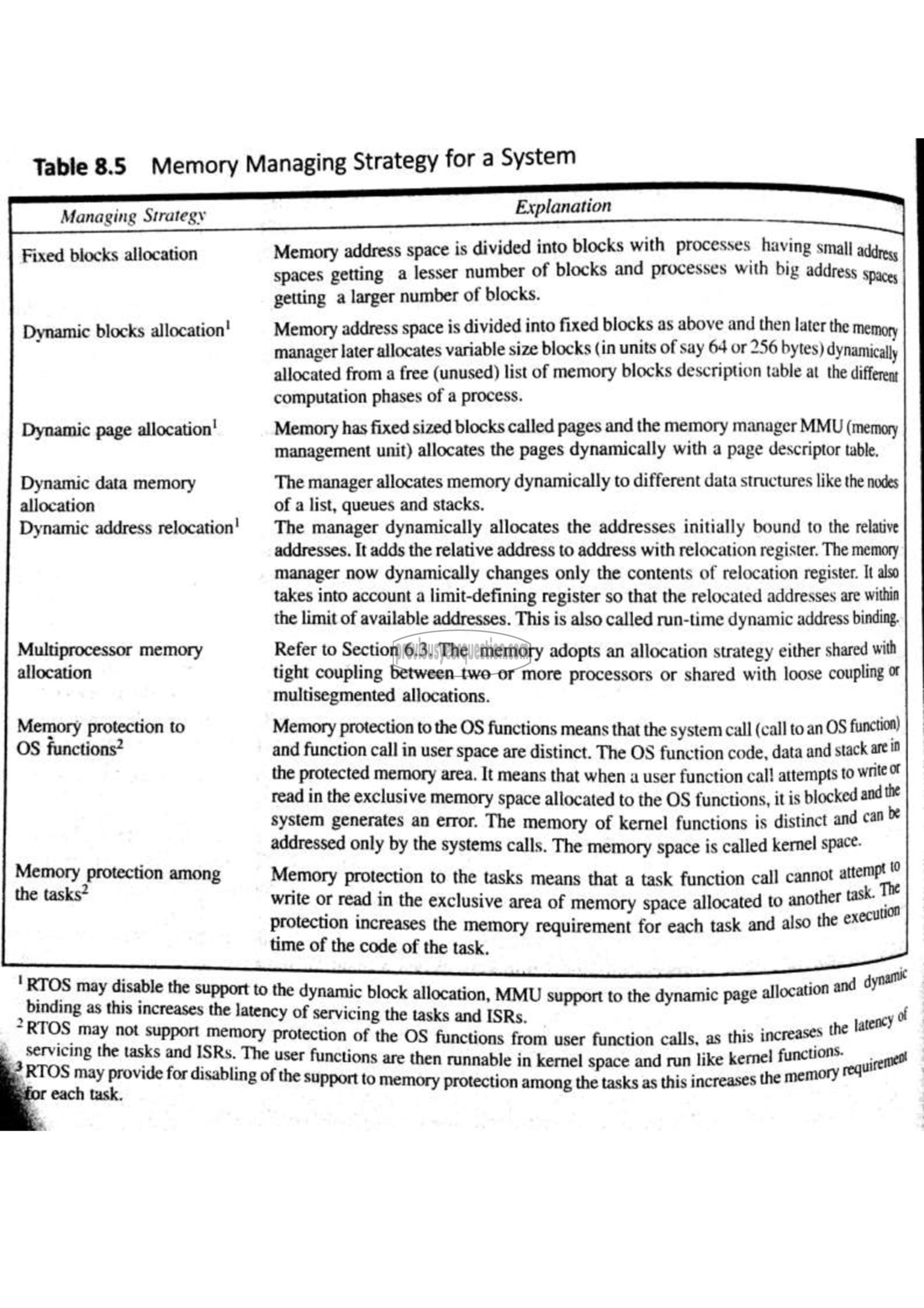APJ ABDUL KALAM TECHNOLOGICAL UNIVERSITY Previous Years Question Paper & Answer
Semester : SEMESTER 6
Subject : Embedded System
Year : 2018
Term : MARCH
Scheme : 2015 Full Time
Course Code : EC 308
Page:48
Table 8.5 Memory Managing Strategy for a System
Managing Strategy
Fixed 010015 allocation
Dynamic blocks allocation!
Dynamic page allocation!
Dynamic data memory
allocation
Dynamic address relocation!
Multiprocessor memory
allocation
Memory protection to
OS functions?
Memory protection among
the tasks?
1 di 0 |
RTOS may disable the support to the dynamic block allocation, MMU support to the dynamic page allocation and அலி
binding as this increases the latency of servicing the tasks and ISRs.
“RTOS may not support memory protection of the OS functions from user function calls, as this increases |
Explanation
Memory address space is divided into blocks with processes having small address
spaces getting a lesser number of blocks and processes with big address spaces
getting a larger number of blocks.
Memory address space is divided into fixed blocks as above and then later the me
manager later allocates variable size blocks (in units of say 64 or 256 bytes) dynamically
allocated from a free (unused) list of memory blocks description table at the differen
computation phases of a process.
Memory has fixed sized blocks called pages and the memory manager MMU (memory
management unit) allocates the pages dynamically with a page descriptor table,
The manager allocates memory dynamically to different data structures like the nodes
of a list, queues and stacks.
The manager dynamically allocates the addresses initially bound to the relative
addresses. It adds the relative address to address with relocation register. The memory
manager now dynamically changes only the contents of relocation register. It also
takes into account a limit-defining register so that the relocated addresses are within
the limit of available addresses. This is also called run-time dynamic address binding.
Refer to Section 6.3. The memory adopts an allocation strategy either shared with
tight coupling between two or more processors or shared with loose coupling of
multisegmented allocations.
Memory protection to the OS functions means that the system call (call to an OS function)
and function call in user space are distinct. The OS function code, data and stack 0
the protected memory area. It means that when a user function call attempts to write 0
read in the exclusive memory space allocated to the OS functions, it is blocked
System generates an error. The memory of kernel functions is distinct and can be
addressed only by the systems calls. The memory space is called kernel space.
Memory protection to the tasks means that a task function call cannot attempt ®
write or read in the exclusive area of memory space allocated to another sit
protection increases the memory requirement for each task and also the execu
time of the code of the task.
he latency of
5 icing the tasks and ISRs. The user functions are then runnable in kernel space and run like kernel functions: ea
gp. RTOS may provide for disabling of the support to memory protection among the tasks as this increases the Me
each task.
राण) ൯90
